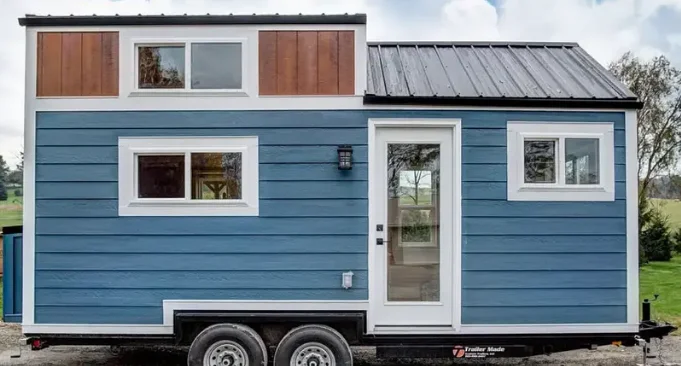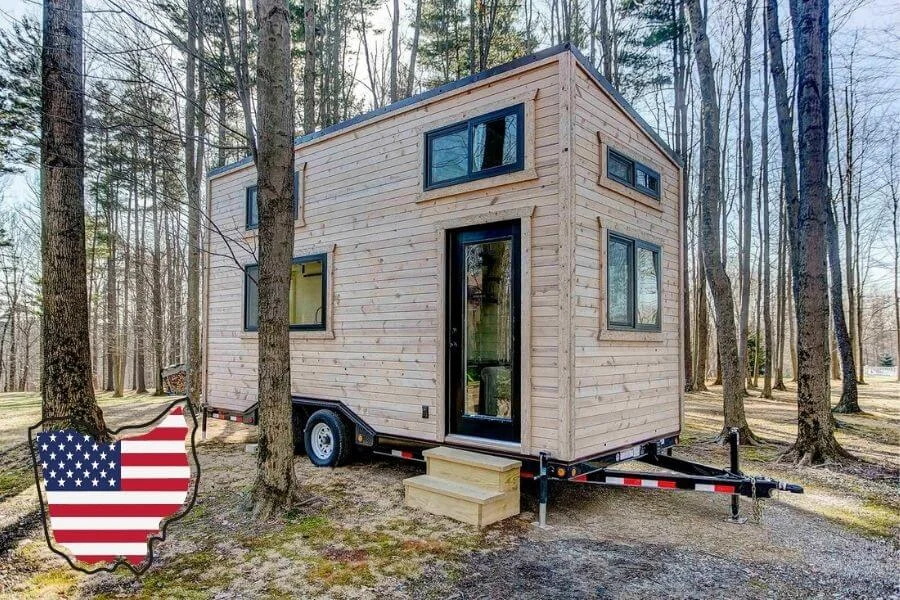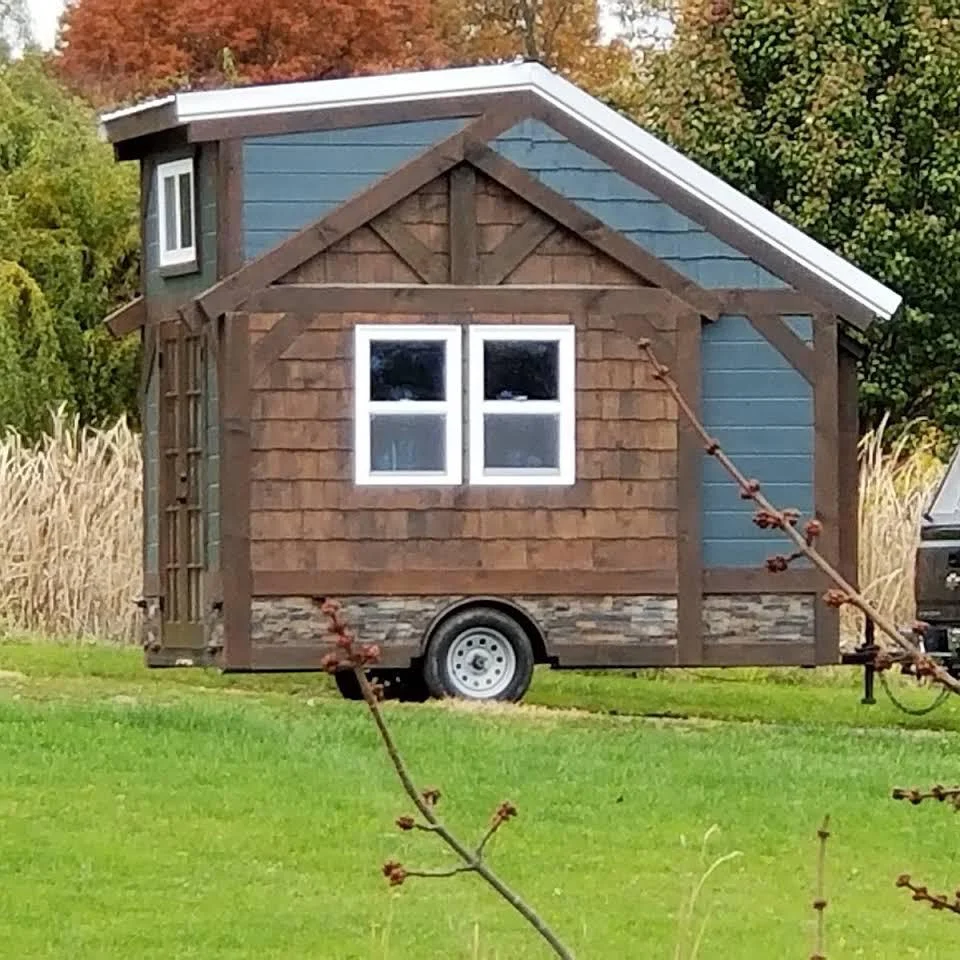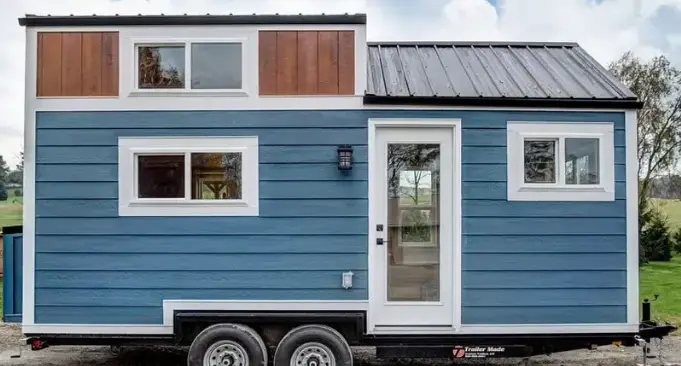Hey there! If you’ve ever wondered about the legality of tiny homes in Ohio, we’ve got some answers for you. In this article, we’ll dive into the fascinating world of tiny homes and explore whether they are permitted or not in the Buckeye State. So, if you’re considering downsizing and embracing the minimalist lifestyle, stick around to find out what Ohio has to say about these pint-sized dwellings.
Zoning Laws
Understanding Zoning Codes
As you consider building or living in a tiny home in Ohio, it’s crucial to familiarize yourself with the local zoning codes. Zoning laws regulate land use in different areas, outlining what types of activities and structures are permitted. These laws help maintain order, preserve property values, and promote a harmonious living environment. By understanding the zoning codes, you can navigate the legal requirements and restrictions related to tiny homes in Ohio effectively.
Residential Zoning Regulations
Residential zoning regulations determine the types of dwellings allowed in different neighborhoods. Various residential zones exist, such as single-family residential (R-1), multifamily residential (R-2), and mixed-use residential (R-M). It’s important to identify the zoning designation of the specific location where you plan to build or park your tiny home. This will determine whether your tiny home is legally permitted in that particular area.
Minimum Square Footage Requirements
In some areas, residential zoning regulations include minimum square footage requirements for dwellings. These requirements ensure that homes meet certain size standards to maintain a certain quality of living. While tiny homes may be smaller than the average house, it’s essential to check if they meet the minimum square footage requirements set by local authorities. Keep in mind that these requirements can vary depending on the zoning district.
Setbacks and Distance Regulations
Setbacks refer to the minimum distance between a structure, such as a tiny home, and the property lines, roads, or other buildings. These regulations ensure that there is adequate space for safety, privacy, and other considerations. Understanding the setback requirements in your area is crucial when determining where to place your tiny home. Additionally, distance regulations may dictate how close or far apart properties must be from each other, which may impact parking or density requirements for tiny homes.
Building Codes
Ohio Building Code
The Ohio Building Code provides detailed guidelines and regulations regarding the construction, design, and maintenance of buildings in the state. While there is no specific code addressing tiny homes, many of the provisions within the Ohio Building Code can still apply. It’s essential to consult the relevant sections of the code to ensure your tiny home meets the necessary construction standards, such as structural integrity, fire safety, and accessibility.
The International Residential Code (IRC)
The International Residential Code (IRC) is a widely adopted set of regulations for residential construction. Since Ohio has adopted the IRC, it serves as a valuable resource when building a tiny home. The IRC covers areas such as building materials, plumbing systems, electrical systems, and energy conservation. Compliance with the IRC ensures that your tiny home meets recognized safety standards while promoting consistency within the construction industry.
Fire Safety Regulations
Fire safety is a critical aspect of building codes and regulations. When constructing or living in a tiny home, it’s crucial to comply with fire safety regulations applicable to residential dwellings. This may include requirements for smoke detectors, fire extinguishers, escape routes, and fire-resistant building materials. Understanding and adhering to fire safety regulations will help ensure the safety of yourself and your tiny home.
Electrical and Plumbing Standards
Tiny homes, like any other habitable structure, require functioning electrical and plumbing systems. Adhering to electrical and plumbing standards is essential for your safety and the proper functioning of your tiny home. The Ohio Electrical Code and Ohio Plumbing Code provide guidelines for the installation and maintenance of electrical and plumbing systems. By following these standards, you can ensure that your tiny home’s electrical and plumbing systems are reliable and meet legal requirements.
Permits and Licensing
Building Permits
Before construction begins on your tiny home, you will likely need to obtain a building permit. Building permits are required by local authorities to ensure compliance with building codes, zoning regulations, and safety standards. The process typically involves submitting plans and specifications for review and paying a permit fee. Acquiring a building permit demonstrates your commitment to constructing a safe and compliant structure.
Electrical and Plumbing Permits
In addition to a building permit, you may also need specific permits for your electrical and plumbing systems. These permits ensure that the installation and modifications to these systems comply with the appropriate codes and standards. By obtaining the necessary electrical and plumbing permits, you can ensure the safety and functionality of your tiny home’s electrical and plumbing systems.
Licensing for Contractors
If you plan on hiring a contractor to build your tiny home, it’s essential to work with a licensed professional. In Ohio, contractors are required to be registered or licensed, depending on the scope of their work. Hiring a licensed contractor provides reassurance that the construction of your tiny home will be carried out by a qualified individual who understands the building codes and regulations relevant to tiny homes.
Classification of Tiny Homes
Recreational Vehicles (RVs)
Recreational vehicles, or RVs, are motorhomes or trailers designed for recreational travel. While some tiny homes can be classified as RVs, it’s important to note that not all tiny homes fall under this category. RVs are subject to their own specific regulations and standards, often overseen by the Department of Motor Vehicles or the Recreational Vehicle Industry Association.
Manufactured Homes
Manufactured homes are factory-built dwellings that meet specific construction and safety standards. These homes are also known as mobile homes or trailers. If your tiny home is constructed in a factory and complies with the relevant building codes, it may fall under the category of a manufactured home. However, it’s essential to understand and comply with the regulations specific to manufactured homes in Ohio.
Modular Homes
Modular homes consist of prefabricated components that are built off-site, then transported and assembled on a permanent foundation. These homes are subject to the same regulations and codes as traditional site-built homes. If your tiny home employs a modular construction method, it may be classified as a modular home, which means it must meet the appropriate building codes and regulations.
Accessory Dwelling Units (ADUs)
Accessory Dwelling Units, or ADUs, are secondary living spaces located on the same property as a primary residence. These units can include tiny homes, Granny flats, or garage conversions. In Ohio, regulations regarding ADUs differ between municipalities and counties. It’s important to research and understand the specific regulations and requirements in your jurisdiction if you plan on utilizing a tiny home as an ADU.

Tiny Homes on Wheels
RV Certification
If you intend to build or live in a tiny home on wheels, obtaining RV certification is an important consideration. RV certification indicates that your tiny home meets the safety and construction standards outlined by the appropriate authorities. Additionally, being RV certified may impact where you can legally park your tiny home on wheels.
Parking and Occupancy Regulations
Tiny homes on wheels present unique challenges when it comes to finding suitable parking locations. While some jurisdictions have specific parking regulations for tiny homes, others may classify them differently based on their purpose or certification. Researching local parking and occupancy regulations will help you determine where you can legally park and reside in your tiny home on wheels without running afoul of the law.
Temporary or Permanent Residency
Consider whether you plan to live in your tiny home on wheels temporarily or permanently. Temporary residency may involve staying in campgrounds or RV parks, which often have their own regulations and restrictions. If you intend to make your tiny home on wheels your permanent residence, you may need to explore long-term parking options, such as private properties or communities that allow this type of housing.
Foundation-Built Tiny Homes
Foundation Requirements
Foundation requirements for tiny homes are typically dictated by local building codes and regulations. Whether that be a traditional concrete foundation or an alternative foundation system, it’s crucial to understand the specific requirements and options available in your area. Complying with foundation requirements ensures the stability, safety, and longevity of your tiny home.
State and Local Regulations
Each state and local jurisdiction may have its own regulations regarding tiny homes built on a foundation. It’s important to research and conform to these regulations when planning your tiny home. Certain areas may have specific minimum square footage requirements, while others may have specific design or architectural guidelines. Understanding the state and local regulations will help guide you through the process of building and living in a foundation-built tiny home.
Minimum Square Footage Requirements
Just like with tiny homes on wheels, some areas may have minimum square footage requirements for foundation-built tiny homes. These requirements ensure that habitable spaces meet certain size standards and provide adequate living conditions. By complying with the minimum square footage requirements, you can ensure your tiny home is legally livable in your chosen location.

Local Jurisdiction Policies
City-Specific Regulations
Cities within Ohio may have specific regulations or ordinances that impact the construction and placement of tiny homes. These regulations can vary widely, covering aspects such as zoning, building codes, parking, and occupancy requirements. Before embarking on your tiny home journey, it’s important to research and familiarize yourself with the city-specific regulations that apply to your desired location.
County-Specific Regulations
In addition to city regulations, counties within Ohio may also have their own regulations pertaining to tiny homes. These regulations can include zoning restrictions, land use classifications, and permit requirements. It is crucial to understand the county-specific regulations when planning the construction or placement of your tiny home, as they may differ significantly from neighboring counties.
Homeowner Association (HOA) Rules
If your chosen location falls within a community governed by a Homeowner Association (HOA), it’s crucial to understand their rules and regulations. HOAs often have specific guidelines regarding acceptable dwellings, architectural design, and even the ability to park or live in a tiny home. Familiarizing yourself with the HOA’s rules will prevent potential conflicts and ensure compliance with any restrictions that may be in place.
Environmental Considerations
Green Building and Sustainability
Tiny homes offer the opportunity for eco-friendly and sustainable living. As you embark on your tiny home journey, consider incorporating green building practices and sustainable materials. This can include energy-efficient appliances, renewable energy sources, water-saving fixtures, and materials with low environmental impact. By adopting green building practices, you can reduce your ecological footprint and contribute to a more sustainable future.
Energy Efficiency Regulations
Energy efficiency regulations may impact the design and construction of your tiny home. These regulations focus on reducing energy consumption through improved insulation, proper ventilation, and the use of energy-efficient appliances. By adhering to energy efficiency regulations, you can lower your energy costs and lessen your environmental impact.
Off-Grid Living Options
Tiny homes, particularly those on wheels, offer a unique opportunity to live off the grid. Off-grid living involves being self-sufficient in terms of energy, water, and waste management. While it may require additional planning and investment, off-grid living can provide independence and a closer connection to nature. If you aspire to live off the grid in your tiny home, explore the necessary systems and considerations for generating power, managing water sources, and handling waste.
Potential Challenges
Resistance from Local Communities
One potential challenge when it comes to tiny homes in Ohio is resistance from local communities. Some individuals may have misconceptions or concerns about tiny homes, fearing they may negatively impact property values or disrupt the character of the neighborhood. It’s important to approach these concerns with patience, education, and open communication to foster understanding and acceptance within the community.
NIMBY (Not In My Backyard) Mentality
The “Not In My Backyard” mentality, or NIMBY, can pose challenges for tiny home enthusiasts. NIMBY refers to the resistance or opposition often faced when attempting to introduce new housing options or alternative lifestyles in existing neighborhoods. Overcoming NIMBY opposition often requires engagement with the community, addressing concerns, and sharing the potential benefits of tiny homes, such as affordable and sustainable housing options.
Obtaining Loan Financing
Securing loan financing for a tiny home in Ohio can be challenging due to the unique nature of these dwellings. Traditional lenders may be hesitant to finance tiny homes, especially if they do not adhere to conventional housing standards. Exploring alternative financing options, such as personal loans or working with specialized lenders who cater to tiny home financing, may be necessary to overcome this challenge.
Advocacy and Policy Changes
Tiny Home Advocacy Groups
Various advocacy groups exist to support and promote the tiny home movement. Joining these groups can provide resources, support, and a community of like-minded individuals passionate about tiny homes. By connecting with others and sharing experiences, you can contribute to the broader movement and benefit from collective efforts aimed at influencing policy changes.
Petitioning for Zoning and Code Amendments
If you believe that existing zoning and code regulations in your area are restrictive or prohibitive for tiny homes, you can play an active role in advocating for change. This can involve petitioning local authorities, engaging in public hearings, and collaborating with other stakeholders, such as tiny home advocacy groups. By advocating for zoning and code amendments, you can help create a more welcoming environment for tiny homes in your community.
Influence on State Legislation
The growth of the tiny home movement has garnered attention from policymakers at the state level. State legislation can play a significant role in establishing guidelines and regulations for tiny homes. By engaging with elected officials, sharing your experiences, and showing the benefits of tiny homes, you can contribute to the shaping of state legislation that supports the development and integration of tiny homes in Ohio.
In conclusion, while tiny homes offer an alternative and innovative housing option, navigating the legal landscape in Ohio is crucial. By understanding zoning laws, building codes, permits and licensing requirements, classification categories, local jurisdiction policies, and environmental considerations, you can make informed decisions and ensure compliance with relevant laws and regulations. Additionally, preparing for challenges, advocating for policy changes, and connecting with like-minded individuals can help foster a supportive environment for tiny homes in Ohio. Remember, building and living in a tiny home requires careful research, patience, and a commitment to creating your ideal lifestyle.


